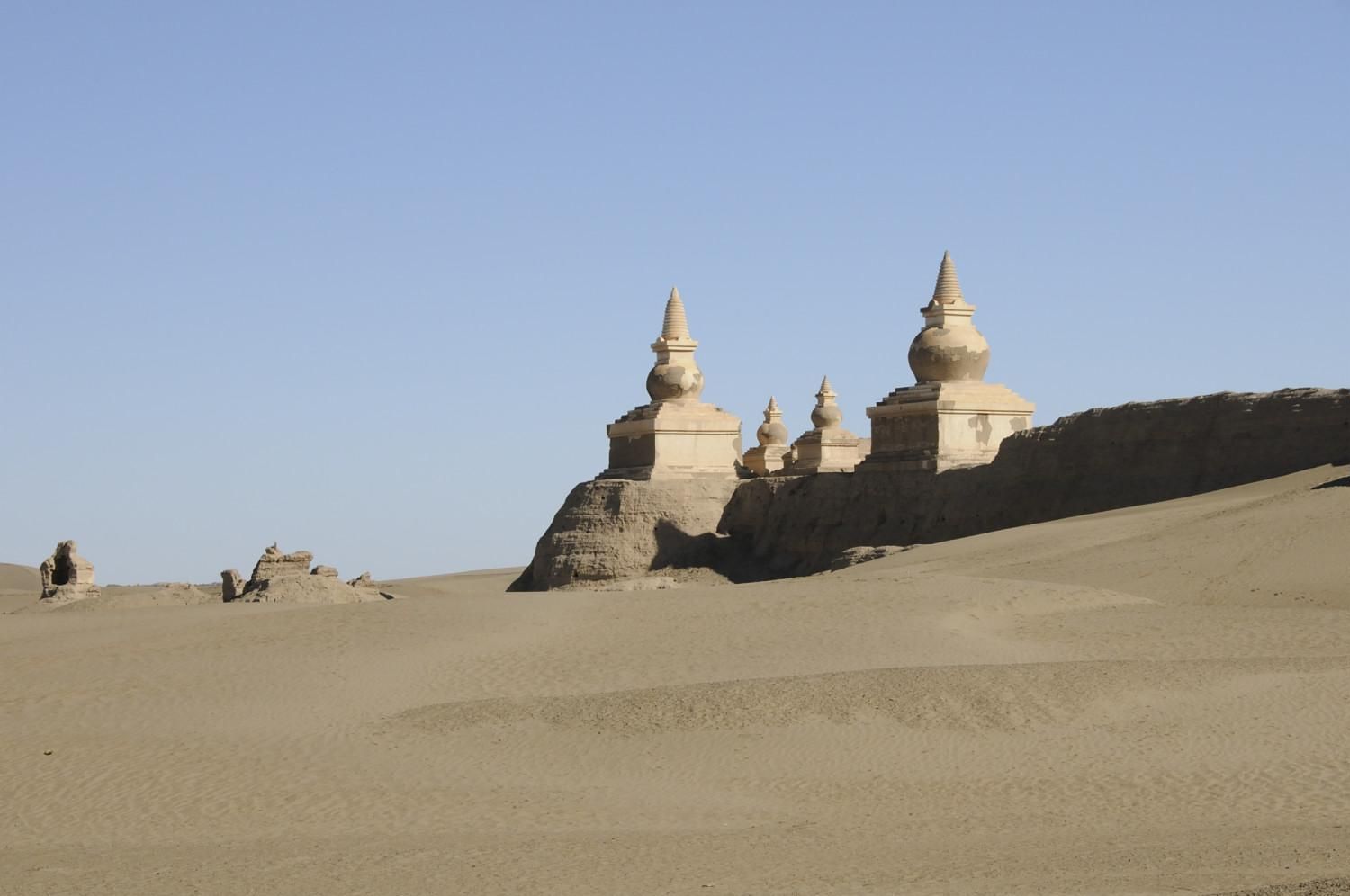Kharakhoto, which means “black city”, is an ancient Tangut settlement that lies on the Etsin river near the present-day border with Mongolia. It was established in the 11th century and served as an important centre of trade under both Tangut (Western Xia) and Mongol rule. The city was one of the first to be overthrown by the Mongols when they invaded in 1226 and its inhabitants were later forced to convert to Islam. The city was conquered and partially destroyed by Chinese Ming forces in 1372, after which it fell into decline.
Kharakhoto consists of a walled city with dwellings, shrines and stupas located within the city walls and nearby. The walls themselves are substantial and well preserved. They are built of stamped clay reinforced by a wooden framework, and have large gates leading through the western and eastern walls, domed circular bastions at the four corners and rectangular bastions along the sides.
The items found here reflect the multi-cultural history of the settlement, including a large number of texts in Tangut and Chinese, but also other languages such as Sanskrit, Tibetan, Mongolian and Old Turkic. In addition to these ancient manuscripts and woodblock prints, excavations also uncovered remains of silk paintings, stucco reliefs, statues and votive clay stupas.
